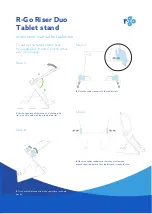
E3S-A
E39-E6 Polarized Mutual Interference Prevention Filters
for Through-beam Sensors
(Accessory, order separately)
•
A set of 4 Filters are sold together for two Through-beam
Sensors (for 2 each for Emitters and Receivers). Order one
for every two sets of Photoelectric Sensors.
•
For mounting, refer to the figure of the Through-beam Slits.
•
The arrow printed on the cover indicates the direction of
polarization. By attaching the Filters opposite to each other
in polarization to the Emitters and the Receivers in rows,
mutual interference can be prevented (in any case, the
Filter attached to an Emitter and to the corresponding
Receiver must be the same in direction of polarization or the
Photoelectric Sensor will not function).
Operating Mode Selection
As shown in the following illustration, the E3S-A has an
operating mode selector on the panel where the Receiver
connector is located.
With this operating mode selector, the E3S-A is in either Dark-
ON or Light-ON mode.
and
Switch
The Emitter of the Through-beam Sensor with the self-
diagnostic feature incorporates a turbo switch. When this
switch is ON, the intensity of the red LED light source can be
increased to make a brighter spot.
Function (
Switch)
The turbo function is effective with the turbo switch pressed,
and the function is reset automatically when released.
With the turbo function switched ON, the light spot is visible
even at a distance of 200 mm, making it easy to check the
sensing position and the angle of the optical axis.
Precautions
(1)Do not keep the turbo switch pressed for longer than 3
minutes. (It will not break even if it is pressed for an
extended period.)
(2)Pressing the switch may change the timer delay settings.
Set the timer after using the turbo function to check the
optical axis.
(3)To press the switch, use a force of 9.8 N max.
Using the E39-R5 Optical Axis Reflector for Through-
beam Sensors
(Accessory, order Separately)
Use this attachment when the set distance is long and
adjustment is mechanically difficult with a sensing object.
•
Attach the Reflector to the Receiver.
•
Look at the Reflector from right behind the Emitter. The
Reflector should be bright with red light when the optical
beam strikes the Reflector. If the Emitter has a turbo
function, the Reflector looks brighter with the function
switched ON.
•
When the Reflector is removed, the light beam strikes the
Receiver.
Emitter
Receiver
Up to two units
can be attached.
Y = 0
Note: The arrows on the Filters can be attached in
either direction when two Sensors are
mounted next to each other. The Filter
attached to an Emitter and to the
corresponding Receiver must be the same
in direction of polarization or the Sensor will
not function.
Light ON
(ON when light is ON)
Operating mode switch (black)
Dark ON
(ON when light is OFF)
D
L
The default operating mode is shown in the
following table.
Sensing method
Default switch
setting
Through-beam Sensors
Retro-reflective Sensors
Dark-ON
Diffuse-reflective Sensors
Light-ON
Timer
Turbo
Turbo
Turbo
Sensitivity adjuster
The OFF-delay timer adjuster is
used as a turbo switch (black).
The intensity of the
red spot will be
increased, making
visual confirmation
much easier.
PUSH
Eye
E3S-AT
@@
Emitter
E3S-AT
@@
Receiver
E39-R5
Optical Axis Confirmation Reflector
http://www.ia.omron.com/
11
(c)Copyright OMRON Corporation 2008 All Rights Reserved.
electronic components distributor












































